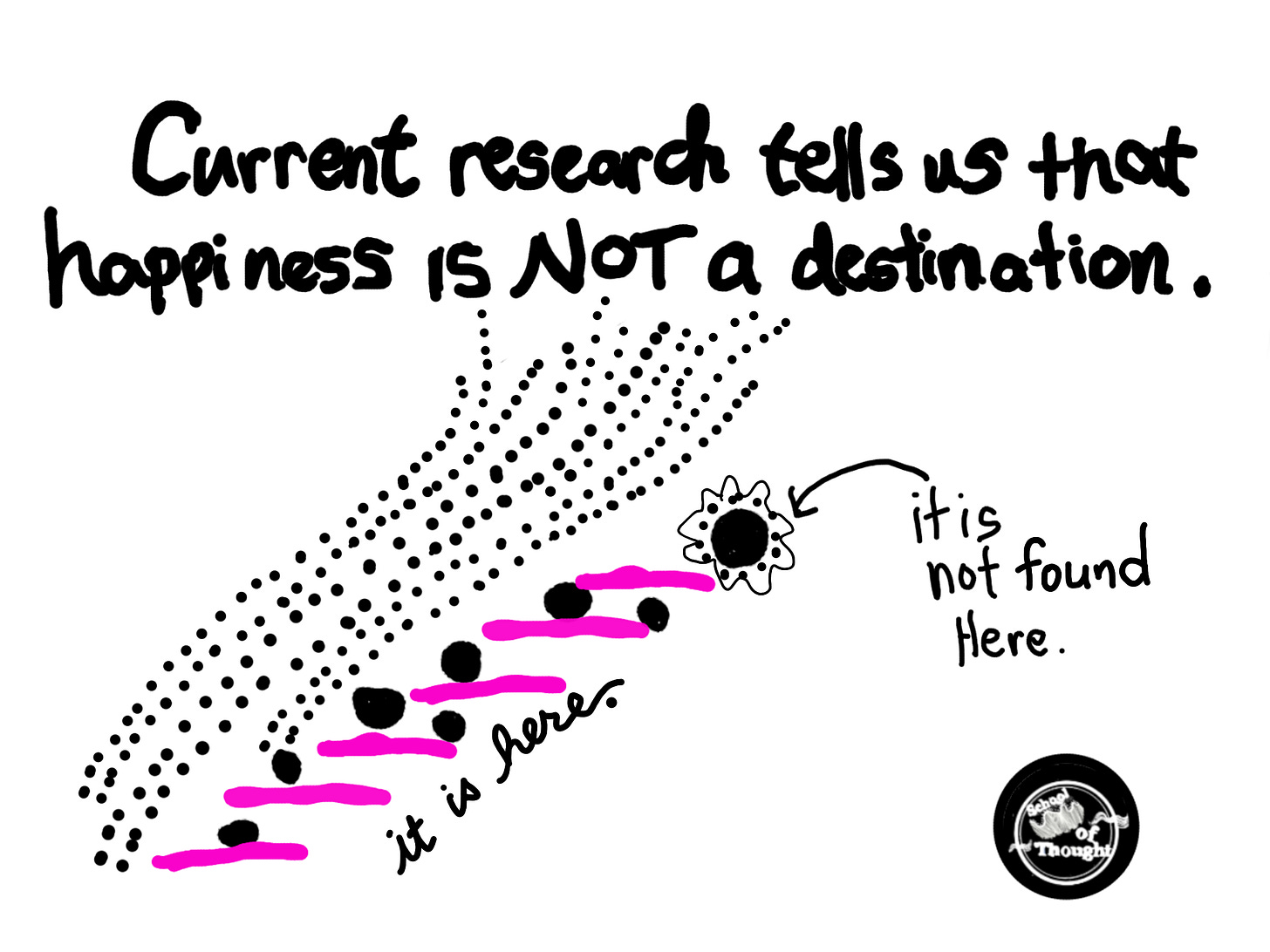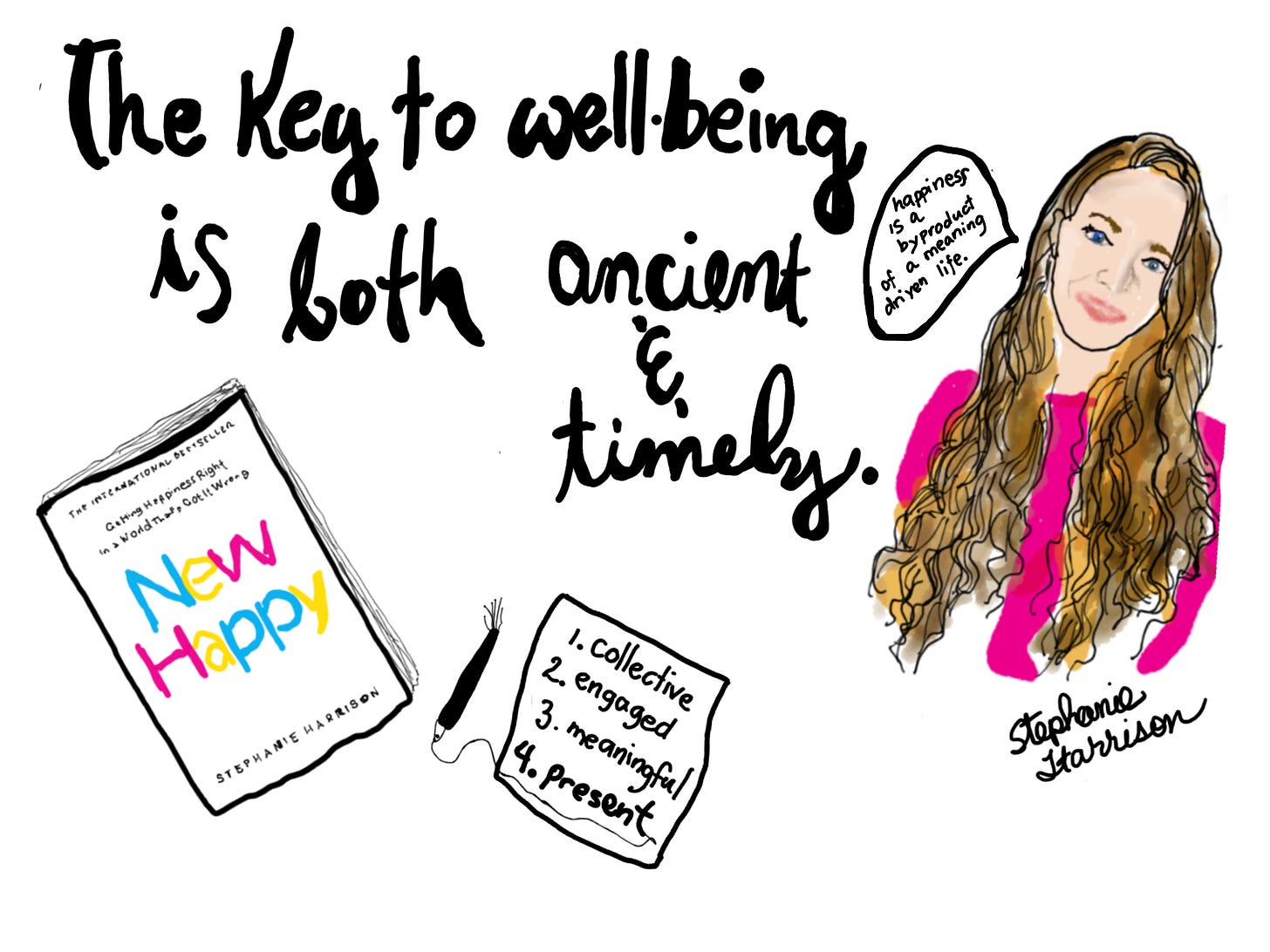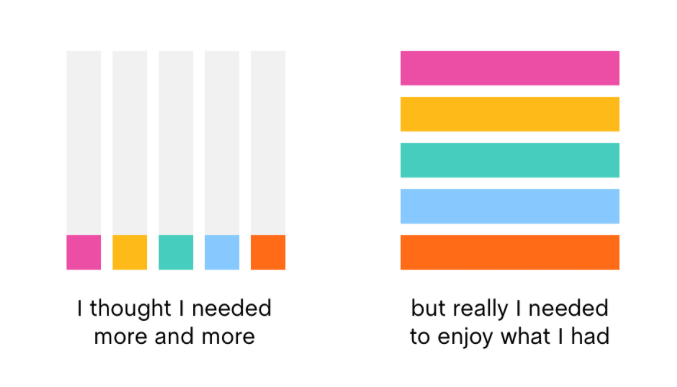If you like this post, please click the ♥️ above. It helps others find my content.
And check out the I ❤️February Special, 50% off for annual subscribers.
“Happiness is a butterfly, which, when pursued, is always just beyond your grasp, but which, if you will sit down quietly, may alight upon you.” - Nathanial Hawthorne
Granted, at the time, happiness did not mean pleasure and joy, it meant something closer to reaching one’s personal potential .1
I’ve appreciated the advancements in the science of joy. 2 3
Yale professor Laurie Santos, who teaches the massively popular course The Science of Well-Being, emphasizes that happiness is often found in the process of striving toward goals, not just in achieving them. Her course is available for adults or teens- for free.
Psychologist Sonja Lyubomirsky, (one of my favorites!) author of The How of Happiness, has conducted extensive research on joy and well-being, showing that nearly 40% of our happiness is within our control through intentional activities such as gratitude, kindness, and pursuing meaningful goals. Her work reinforces the idea that happiness isn't something we passively receive but something we actively cultivate through the way we engage with our lives.
Stephanie Harrison, a happiness researcher in the US who contributed to the work of the UPenn Positive Psychology Lab wrote a wonderful book (with gorgeous visuals!!!) called The New Happy. She argues that US. culture tells us that happiness comes from achievement, perfection, and material gain, but research shows that these don’t actually make us happy. Her research finds that happiness comes from growth, purpose, and contribution rather than fleeting pleasures. One of her visuals:
A peer-reviewed academic journal called the Journal of Happiness Studies (❤️) has been in operation since the year 2000. If you take a look, check out the article, “Are All Happy People Alike?” I won’t spoil the ending.
I was listening to yesterday. Ari Shapiro was interviewing people living along the Panama Canal. It was beautiful, even the way the interviews were set up to build trust and care and fairness. 🎧Recommended listen.🎧
Here is what I learned:
Media says: There is no central electricity. (Reality: They have solar.)
Media says: There is no water system. (Reality: They have fresh springs.)
Media says: They are isolated. (Reality: They depend on each other)
Other gorgeous details: They grow ALL of their own food. They love their land. They care about each other. They do not want “development.”
Where does happiness really lie?
I think in the reality.
Autonomy, Nature, Each Other, Abundance
Sonja Lyubomirsky says, “the experience of joy, contentment, or positive well-being, combined with a sense that one's life is good, meaningful, and worthwhile.”
How might we use our systems, our government, our workplaces, our schools, our personal lives, to engage in the happiness of the pursuit, the joy of being, the present satisfaction of having what we need?
The Big Idea
In education, we often focus on preparing students for “success,” which is too often equated with external achievements ~ grades, college admissions, job titles, and financial security.
We make the mistake of treating happiness as a reward, something students will achieve if they work hard, do well, and land the right job.
We frame this as the pursuit of happiness, a destination to be reached.
What if we shifted our mindset?
What if, instead of focusing on the pursuit of happiness, schools emphasized the happiness of pursuit—the intrinsic joy of chasing something meaningful, engaging, and uniquely suited to each student?
What if we instead taught students that fulfillment comes from continuous learning, curiosity, and striving for personal meaning?4
As I go hiking and lounge around this weekend with my family, I am thinking about this pursuit: happiness. Are we pursuing it now? Is it what I do every day?
Or is it something else?













